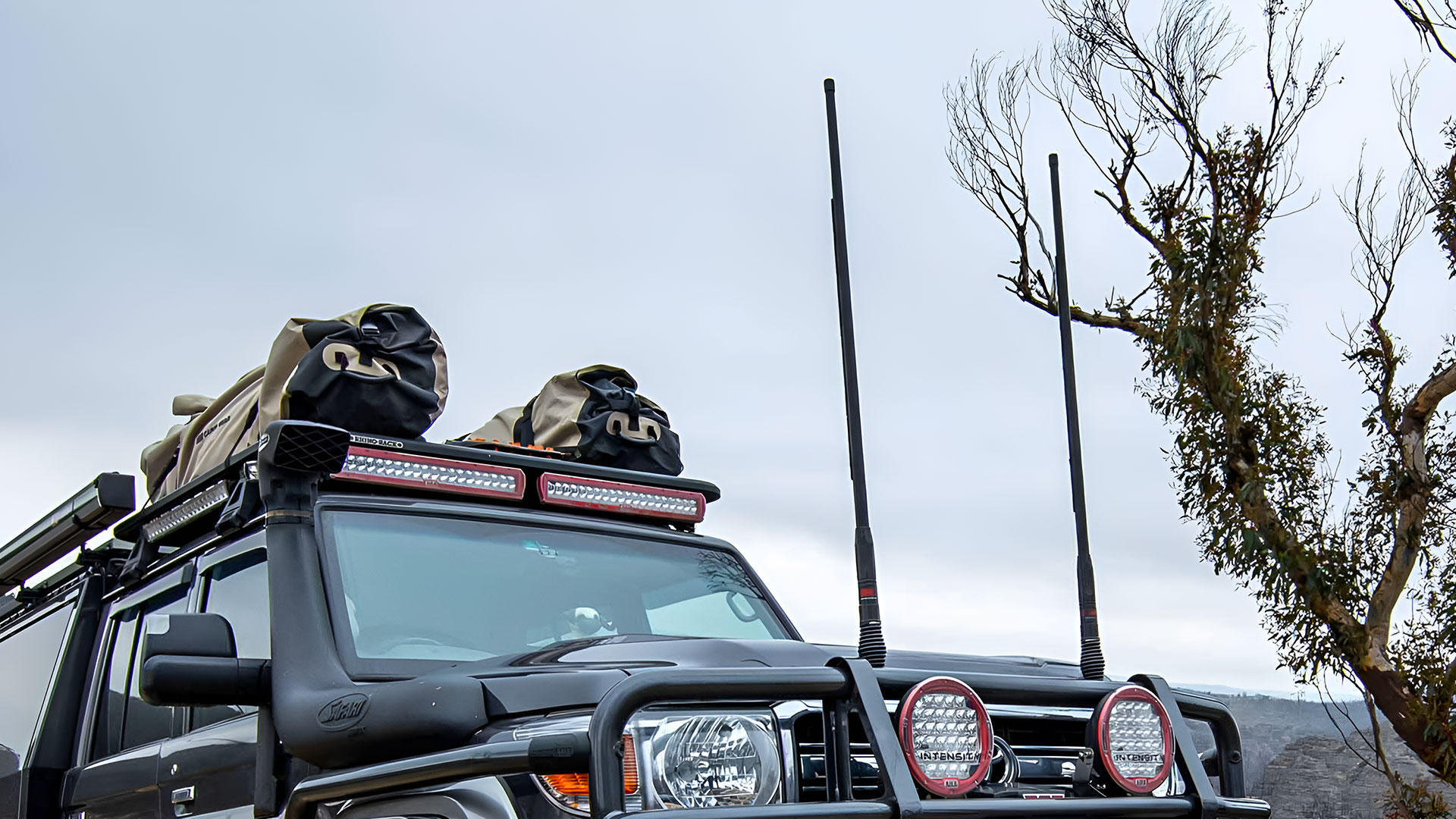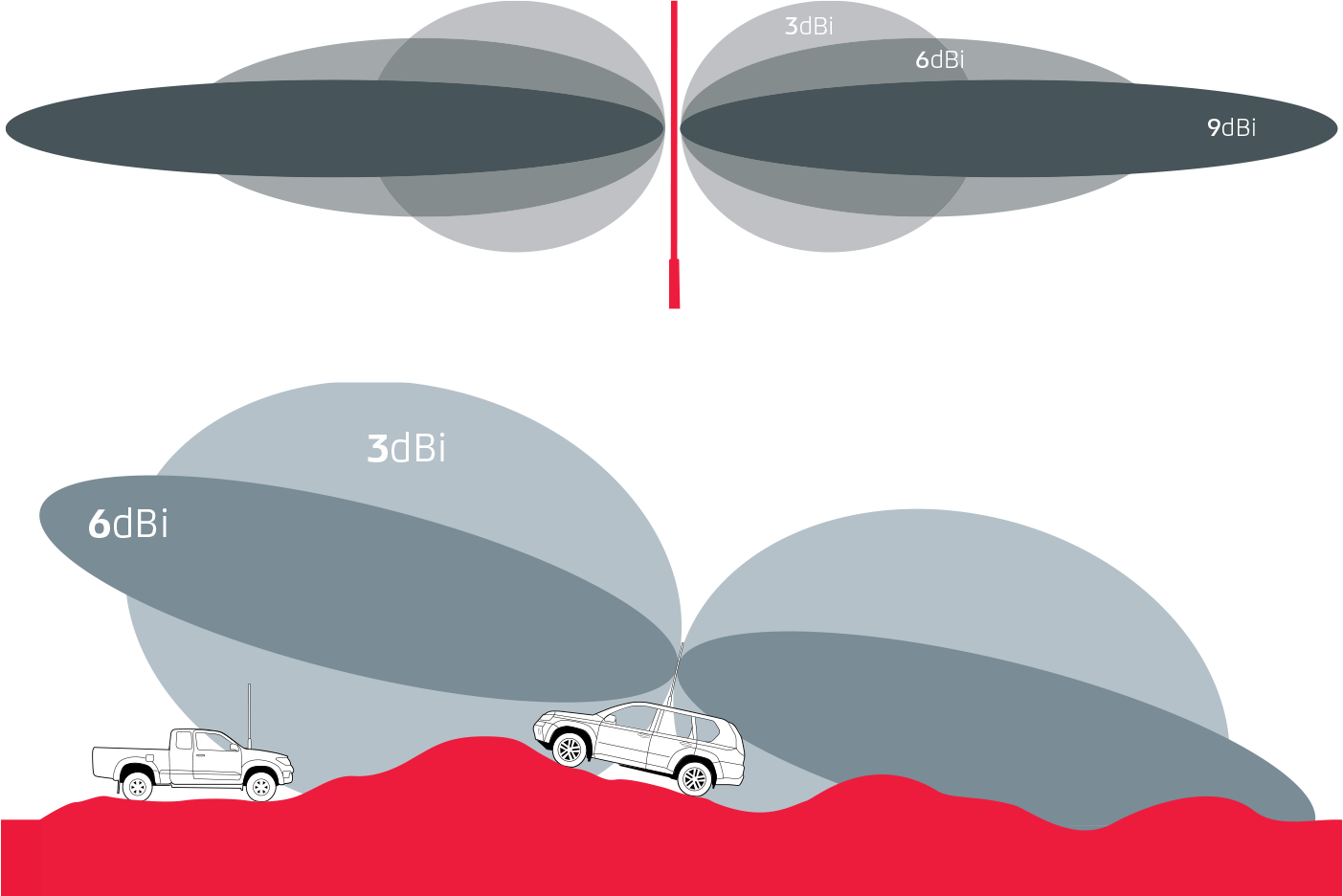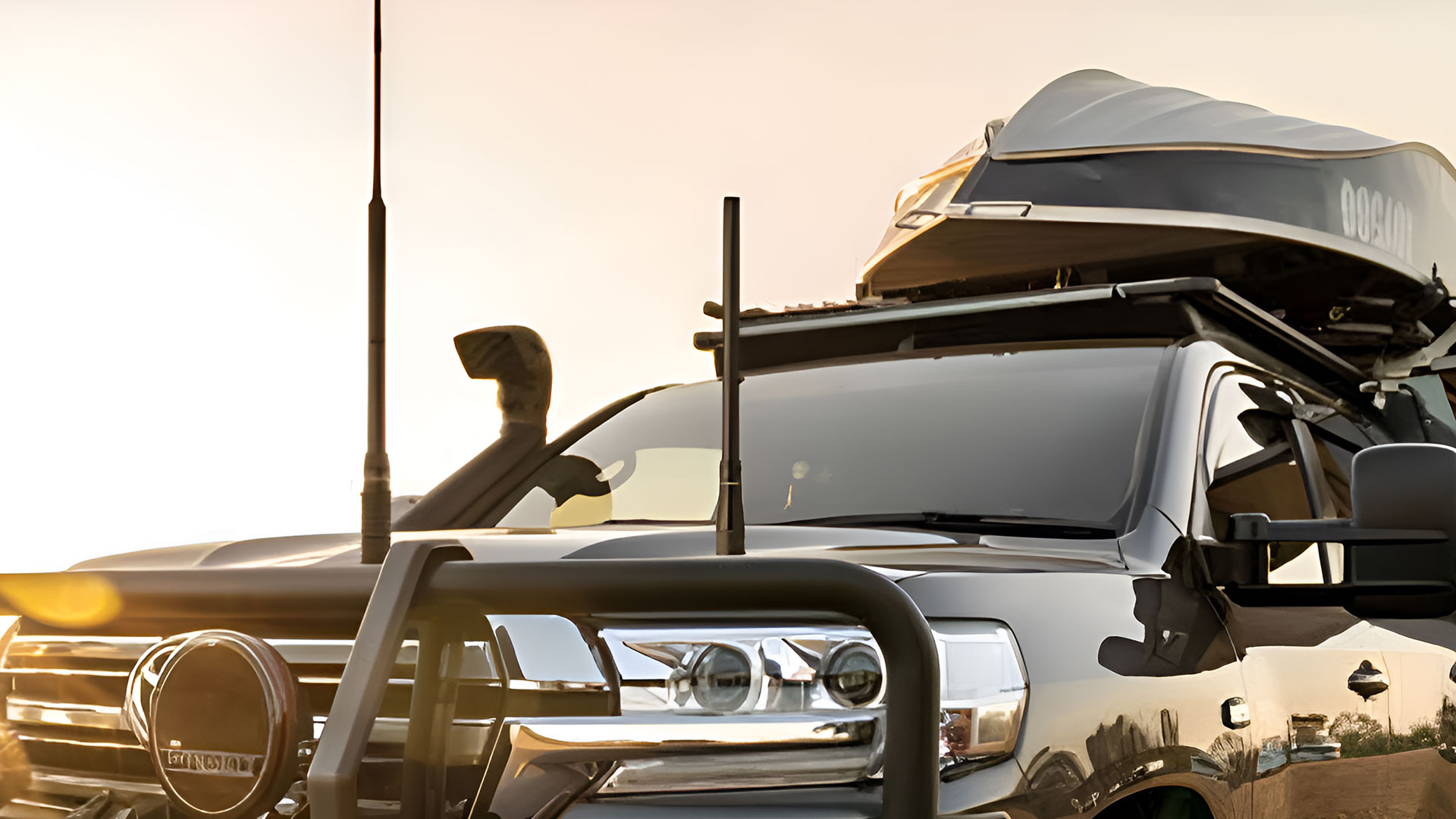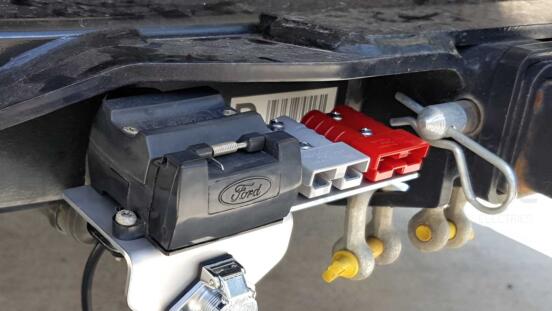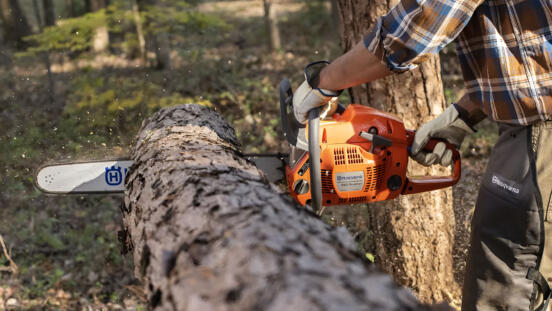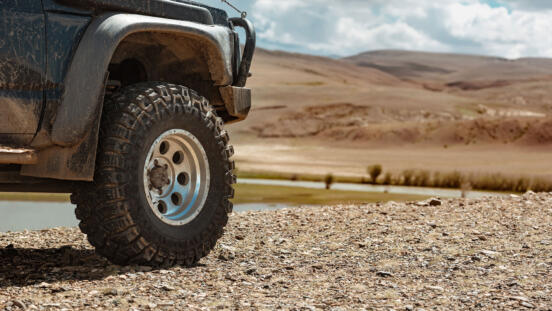Image credit: ARB 4x4
UHF antennas for 4x4s come in sizes ranging anywhere from a foot in height to 8 feet tall, but more antenna doesn't always mean more range. In fact when used in the wrong environment, the taller the antenna, the worse things get.
UHF antennas 101
dBi and Gain
There are countless antenna options out there, but they can be grouped into 3 general categories.
- Unity and low gain: 2.1-3 dBi antennas.
- Medium gain: 6.6 dBi is probably the most common medium gain antenna.
- High gain: 8-9 dBi antennas.
dBi is a measurement of an antenna's output (more on this shortly), but also directly correlates to its physical height. Roughly speaking, a 2dBi antenna will be around 2 feet tall, a 6dBi antenna will be around 4 feet, while a 9dBi antenna will be several meters tall; you're never fitting your four-wheel-drive in a garage or carpark again if you permanently mount a high gain antenna.
Line of sight and interference
UHF radio waves travel mainly by line of sight (LOS). They don't bounce around the corners of buildings or through valleys and don't reflect from the atmosphere to bounce down on the other side of mountains (technically there is some reflection, but in terms of practical gains it's effectively none).
UHF waves attempt to pass through obstructions between the two radio operators; becoming weaker and losing range with every obstacle they must go through. Hills, rocks, trees, heavy rain, or dust storms all negatively impact UHF range.
(Higher power UHF radios may push further through sources of interference, e.g. a 5 watt radio vs a 3 watt radio, but for this article, we're just focusing on the antenna itself, and assuming all else is equal.)
Radiation patterns
Beyond raw transmission distance, an antenna's dBi also dictates its radiation pattern; this is the "shape" of the signal being transmitted.
A higher dBi antenna will transmit farther, but, it will be more susceptible to obstructions and interference and will also transmit a narrower signal. This drastically affects how an antenna performs in different environments.
UHF antenna and radio manufacturer GME provide an excellent representation of this, which you can see above:
The top image illustrates the radiation pattern and range of 3, 6, and 9 dBi antennas, while the bottom picture demonstrates how the narrower radiation pattern of a higher dBi antenna can be less effective in difficult terrain.
This is why a bigger antenna is not always better.
You'll note that a high-gain antenna (8+ dBi) isn't included in the vehicle diagram above. These really are intended for truly open-road use only, picture traveling along the highway in the middle of a flat desert, with not a rock or tree to be seen for miles.
Using an 8 dBi antenna in a mountainous area is just going to be terrible.
Which UHF antenna is right for you
This is where selecting the right antenna for your style of travel comes in. Here are a few scenarios to guide you:
Unity / low gain antennas
If your UHF is for communicating with your regular convoy or 4WD club, and you're traveling tracks together where you're never separated by more than a hundred meters or two, a Unity / low gain antenna (2.1 dBi etc.) will be best for you. They're short, sturdy, and will provide more than enough range for clear communication in this scenario.
For hilly country, mountain tracks, and the like, even where the communication range is extended, a Unity antenna is arguably your best bet again. In some circumstances, such as areas of dense rock, communication may still be limited, but that's just the reality of UHF communication.
High gain antennas
As already mentioned above, a high-gain antenna should only be considered if you're doing flat over-landing. If your travels include dunes, mountains, forests, etc., a high-gain antenna will constantly struggle in these situations and your communication range will be very limited.
Beyond that, their height can make them a regular inconvenience. If you regularly visit towns or forested areas, you will need to take the antenna on and off to avoid striking and smashing it against overhead obstacles. Even the strongest antenna mounted on a spring base can only take so much abuse, and won't last long hitting solid tree branches or overhead signs.
Image credit: Oricom
Medium gain antennas
Medium gain antennas, like the 6.6 dBi option mentioned, are a compromise of the above, providing a balance of transmission range, tolerance for interference, and a broad-ish radiation pattern.
Personally, I have both a 6.6 dBi and 2.1 dBi antenna, using the Medium gain option while on the road, and switching to the 2.1 dBI Unity gain antenna when going into the mountains.
While this is the ideal, it's understandable many wheelers may not want to deal with 2 antennas. If you decide to run just one antenna for all situations, a 6.6 dBi antenna may be your best bet. Just consider how much open area driving vs more mountainous terrain driving you do, and whether a low or medium gain antenna will be your best all-rounder.
If you want to get maximum performance, but regularly travel in a variety of environments, you'll probably need to invest in multiple antennas, unfortunately. But you can always add antenna #2 after a few trips with your first choice.
Read section again:
dBi and gain
Line of sight
Radiation patterns
Which UHF antenna is right for you
# What size UHF antenna is best, is a bigger UHF antenna better, are taller UHF antennas better, tall vs short UHF antenna.

